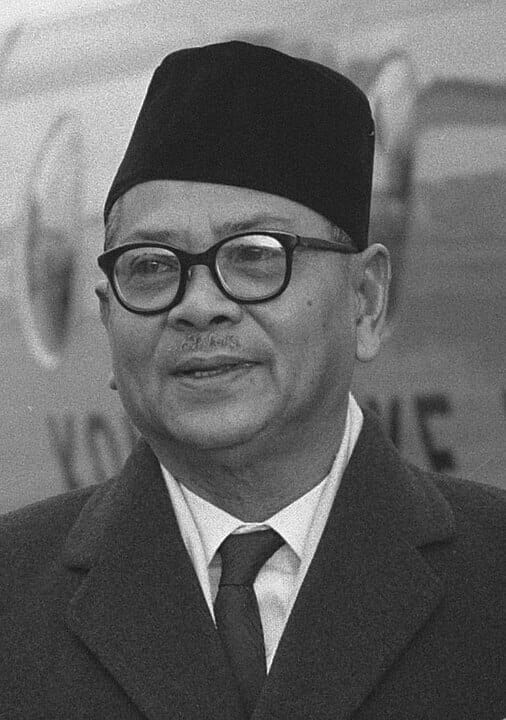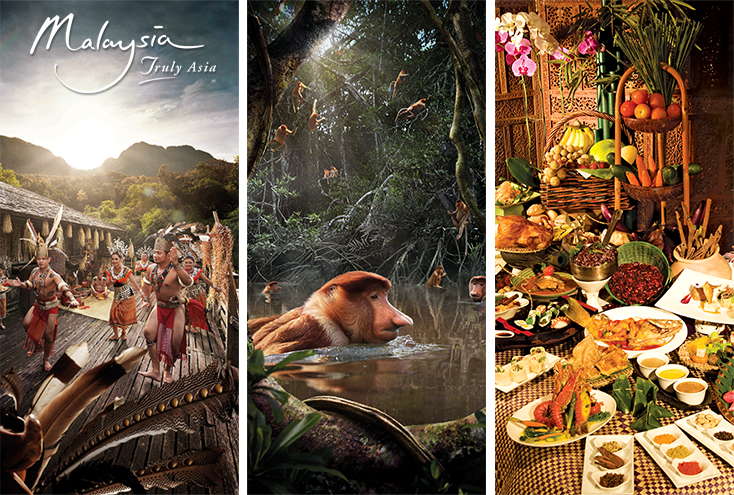The single most enduring ideology in Malaysian politics is Malay nationalism, and a close second would be Malaysian nationalism. One might wonder what the difference is really, but both have distinct features while maintaining a tenuous relationship between them. When someone refers to the Rakyat in public discourse, who is being referred to often is coloured by one’s choice of nationalism here.
A conservative American political theorist, Samuel Goldman, introduces a somewhat discrete framework in looking at nationalism. In his latest book, After Nationalism, he looks at the three modes of understanding American symbols of nationalism — Creed, Covenant and Crucible* (see word definitions below) — at different moments of its history. The project of the United States of America was conceived of as a covenant between the early (mainly) British Protestant settlers and their ‘promised land’, born in their creedal Declaration of Independence but, in reality, a crucible of many colours and tribes. Malaya, and later Malaysia, was formed under the auspices of a multiracial inclusion enshrined in the constitution, creating an unstable creed-crucible combination under immense racial inequality. The rupture would come later in 1969 and see the expansion of the covenantal narrative of our ‘social contract’ between the races and Malay nationalism.
Analysing the nature of nationalist symbols is critical to understanding their power in society to mould thoughts and perception as well as mobilise people in one direction or another. This short article will attempt to analyse various political currents and historical events within the framework to understand better the contradiction and possible futures of Malay and Malaysian nationalism.
Creed – Malaysia’s Founding Constitution and Legal Equality
Creedal symbols of nationalism, according to Goldman, refer to a shared ideology or a set of values that defines a nation and its people. In America, the Declaration of Independence and the writing of its founders are used by racial minorities to struggle for equal rights. With the second line from the Declaration being:
We hold these truths to be self-evident, that all men are created equal, that they are endowed by their Creator with certain unalienable Rights, that among these are Life, Liberty and the pursuit of Happiness.”
Setting aside the racist and sexist attitudes of many founders, it is hard to blame minorities for using these words to assert a place for themselves in American society today. In the writings of this early generation of Americans, one can find very hopeful passages about shared values and ideals that could serve as a foundation for its nationalism.
Similarly, the founding of Malaya and Malaysia and the drafting of our constitution was done in the spirit of egalitarianism, justice and democracy — whatever you might think of the political situation of the time. The constitution speaks of rights, freedoms and equality before the law for all Malaysians. And as such, it also allows for the struggle for inclusion to take place. It does, however, leave a crucial opening for Malay nationalism through its articles on the exclusive nature of the Bumiputera and Islam. This opening then erodes the power of utilising the constitution as a foundation for a creedal Malaysian nationalism.
In the arena of politics, our constitution and the figure of our First Prime Minister, Tunku Abdul Rahman, are only evoked by a small section of liberals to advance the narrative of a more inclusive past. The education system and its teaching of history do little in promoting any ideas of shared values beyond multiracial tolerance but more on that in the Crucible section.

Tunku Abdul Rahman, a Malaysian statesman and lawyer who served as the first prime minister of Malaysia and the head of government of its predecessor states from 1955 to 1970. He was the first Chief Minister of the Federation of Malaya from 1955 to 1957. He supervised the independence process that culminated on 31 August 1957. Wikipedia Commons
Covenant – Race and Religion in Tanah Melayu
The covenantal narrative of America is premised on Early American settlers, primarily Protestant but mainly British Calvinists, seeing themselves as a new chosen people to live on a land promised to them by God. This idea of a divine covenant with the land has marked much of America’s history till today. Early settlers sought to exclude Catholics, Irishmen, Germans, and later African Americans and Asians, guided by this covenantal notion. The dominance of the ‘WASPs’ (White Anglo-Saxon Protestants) in the highest realms of American government and society remains a legacy to that early vision.
The Malaysian variant of the covenant is the notion of Tanah Melayu and the idea that Islam has always been here, entrenching the idea that Malaysian history began with the Malaccan Sultanate. This historical-derived connection to the land would continue to be the justification for the Bumiputera category. Since independence, the class has been expanded just to be inclusive enough to absorb indigenous Orang Asli and the East Malaysian Orang Asal formally. A cynical way to look at this is that it does not destabilise the ‘blood and soil’ narrative while, in practice, the state actively excludes them from development.
These symbols are the type of nationalism most Malaysians are familiar with because concepts like Tanah Melayu and the Ummah are regularly invoked when UMNO faces crises and needs to gin up support from its base. But unlike the US — where the Christian covenantal model suffers from an erosion of the ideological consensus due to secularisation and increasing diversity, the Malaysian state actively sustains the discourse of religion as it rigidly enforces Islamic practices in order to keep its covenantal legitimacy going. The state, on behalf of the Malay nationalists, sustains the idea of Malaysia as an Islamic country for political ends.
Crucible – Melayu, Cina, India dan Lain-Lain ONLY
Goldman uses crucible imagery to describe the melting pot of ethnicities and cultures that make up the American people. Not long after its founding, America used these symbols of inclusion and diversity to facilitate mass immigration and territorial expansion to keep its capitalist development going. As mentioned earlier, this narrative was resisted by many through regular attempts to exclude fellow Europeans, Blacks and Asians at various turns in its history. Yet, at its most liberal and progressive moments, politicians and pundits speak about the United States that was built off the back of immigrants from all across the world, at times referencing the creedal ideas of being a land of opportunity — presumably for anyone willing to come.
Malaysia, too, cloaks itself in the rhetoric of multicultural tolerance, if not racial harmony. Its manifestations are commonly seen in national tourism ads and the speeches of politicians to a more plural audience. National slogans like Malaysia Boleh, 1Malaysia or Keluarga Malaysia are meant to engender the sense are Malaysian are united as a people. Yet, unlike the US notion of being a land of immigrants, the Malaysian melting pot symbols leave no room for the immigrants whose labour has contributed much to building this country or the refugee who are fleeing conflicts and hardship. Harsher rejections of the crucible in Malaysia come from the spokespeople of Malay nationalism who would assert the creedal notion of Tanah Melayu.

“Malaysia Truly Asia” Image from Tourism Malaysia website. https://www.tourism.gov.my/campaigns/view/malaysia-truly-asia
UMNO as the site of primary contradiction
A key actor in this contest between the three sets of symbols is, of course, UMNO and its offspring, who claim the mantel of Malay nationalism. A party that supposedly won independence through an alliance based on multiracial tolerance and compromise, UMNO regularly bounces back and forth between its Malay Muslim chauvinism and its nationalism of racial harmony. As time has passed, its dual role as protectors of Malays and the impartial custodian of the multiracial ‘social contract’ becomes less and less credible.
Of late, it has had to lean more heavily on its Islamic and Bumi-protecting credentials to shore up its support in the face of intense competition for its mantel. Having been the dominant party for more than half a century, UMNO has long since removed the potency of creedal symbols of constitutional liberties in the education system and public discourse. So, for the time being, it seems the leaders of UMNO will have to balance the desires of the political base for creedal rhetoric while maintaining the appearance of racial tolerance for its non-Malay coalition allies.
The Future of Malaysian Nationalism – Bangsa Melayu or Bangsa Malaysia
The American experience shows that all three sets of nationalist symbols remain in tension today because the various groups have dug in on their particular vision of nationalism. Increasingly, there is recognition that this contestation cannot go on forever without a resolution, possibly a violent one — some on the right are talking about having another civil war.
Malaysian don’t entertain such violent possibilities — except in small quarters of the right-wing — because we are regularly reminded about May 13, and the circumstances here have not even come close to warranting that kind of action. But, anyone would realise these nationalist symbols cannot coexist in contradiction to one another in perpetuity and that their differences would sharpen at points of crises in Malaysian society — sufficiently to warrant genuine concern.
Compounding that danger, it seems that the terms of any discourse in our society are set in stone. On one side is UMNO’s narrative of the covenantal defence of Tanah Melayu while at the same time holding up the crucible idea of the multi-racial social contract. On another are the appeals for a more inclusive multicultural politics, typically a combination of the harmonious melting pot or our egalitarian constitution, which has little resonance outside urban spaces at this moment. These combinations remain highly unstable as they are tailored by political elites for specific audiences and occasions. Resolving the contradictions between them would be no simple task as it risks alienating various stakeholders, especially in the deployment of covenantal symbols of nationalism — linked to the Bumiputera notion.
Without a political or social revolution to rewrite our founding myths and foundational race narratives, the only conceivable path forward at this moment is a combination of creed and crucible — a multiethnic harmony that is underpinned by constitutional protections. In this narrow future, if the creed-crucible Malaysian nationalism is to properly take root in society, Malay nationalism will need to be purged of its venomous chauvinism. Depressing as it is to say, Malaysia does not look like it is heading in this direction at this point in time.
Jeremy Lim
*Definitions (from Oxford Languages)
Creed – a set of beliefs or aims which guide someone’s actions.
Covenant – a formal and serious agreement or promise; in theology, an agreement which brings about a relationship of commitment between God and his people.
Crucible – a ceramic or metal container in which metals or other substances may be melted or subjected to very high temperatures.

